Wall panelling can be a great way to bring instant character to your bedroom space. As well as the potential aesthetic benefits, there is the functional advantage of the panelling providing insulation and acoustic protection to the bedroom wall.
It can also be a simple way to add character, warmth or colour to your bedroom. Wall panelling can complete a room by adding texture or depth and highlight certain areas, usually the bed, which can have a big impact on small spaces and walls.
They are versatile and adaptable to other decorative elements within your home. Bedroom wall panelling can finish a space by combining with the ideas, wall paint, style and furniture presented in a room.
There are many ways that wall panels can be styled, from more traditional designs to walls that add a modern twist to your interiors. Wall panelling can be used as a focal point, or can act as a seamless addition to your bedroom.
Let's explore some ways that you can achieve your wall panelling dreams, without needing to be a qualified interior designer.
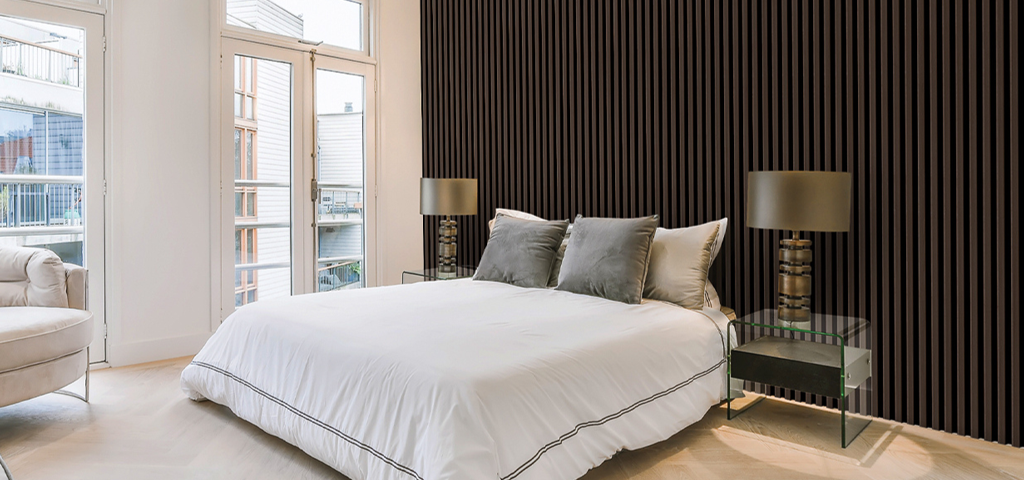
Modern Bedroom Panelling
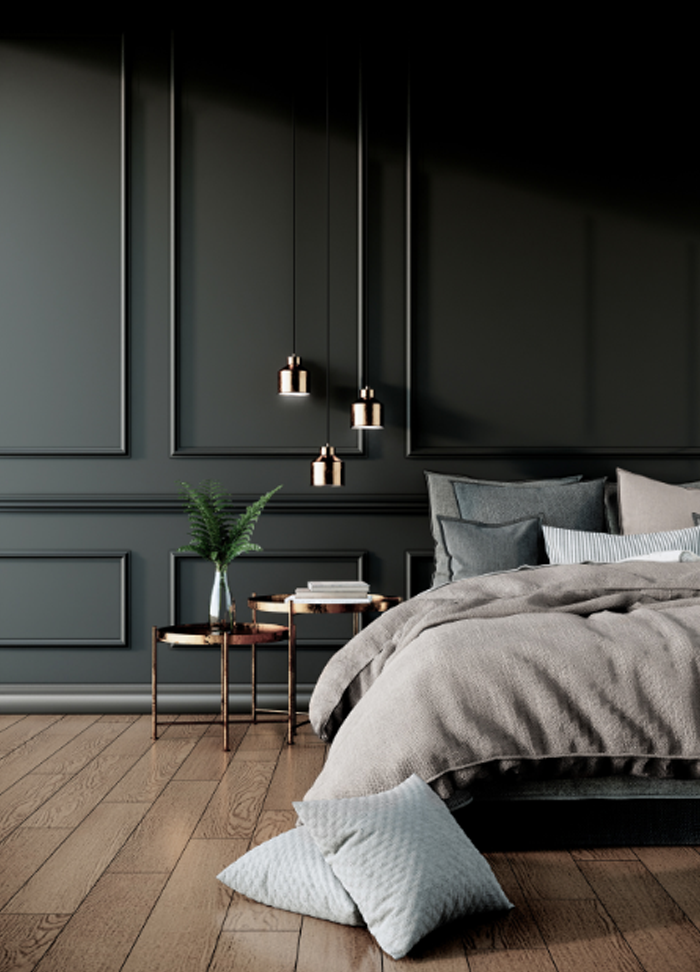
Bedroom wall panelling can be a simple way to create style in a room. The purpose of which is up to you!
One way that panelling could fit into modern homes would be to install simple and contemporary styled panelling that continues that feel. The use of a square or rectangular grid design is an easy way of elevating your modern bedroom walls, and can be done with monochromatic colours to create a flawless and sleek finish to your wall.
Slatted wall panels are on trend at the moment, inspired by Scandinavian interior design, they are a way of incorporating natural elements to bedroom walls in a clean way. Wood panelling is also often combined with sleek and light interiors to create a polished contrast.
Small Bedroom Panelling
Wall panelling can be the perfect way to enhance your small bedroom or spare room space.
Small bedrooms can be difficult to bring design flair to as they can often be darker and more cluttered. But not to fear, there are many ways in which wall panelling can be utilised to make your smaller space appear larger.
Using a light colour scheme on a feature wall could help to increase natural light within the space, as well as bringing a little extra style to a space that can sometimes be overlooked.
Slatted wall panelling is a trend often used in living room areas as a stylish feature wall and TV mount. Alternatively, applying long thin wood panelling to small bedrooms can be trick your brain into making the space up to the ceiling feel bigger.
Having the wooden wall panels span from floor to ceiling helps to elongate the look of the bedroom and give the illusion of a higher ceiling. This could also be done using wallpaper with patterns that stretch vertically to lengthen the space.
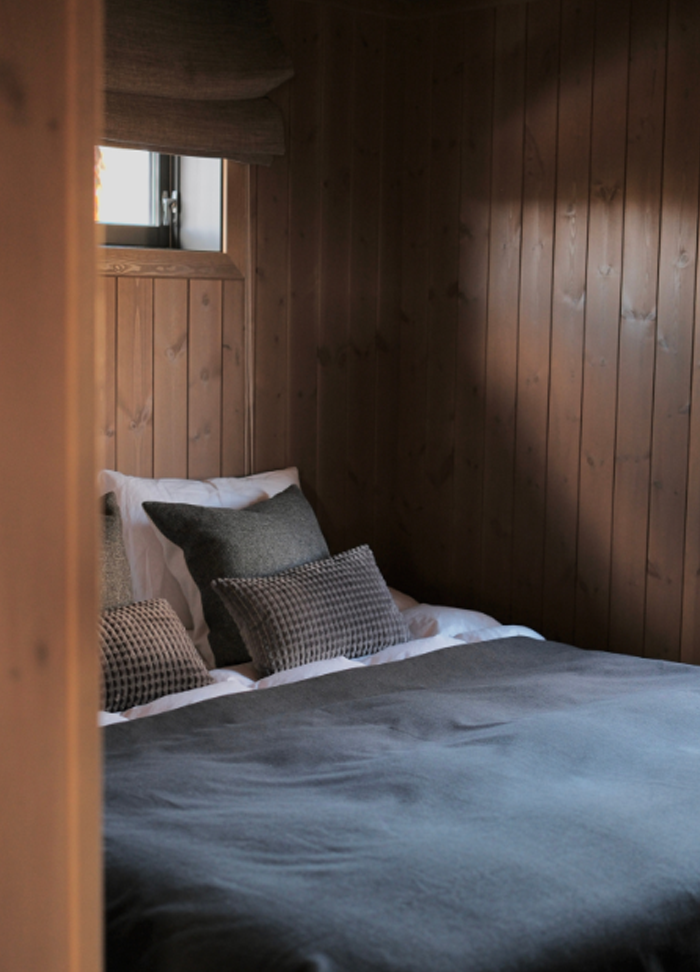
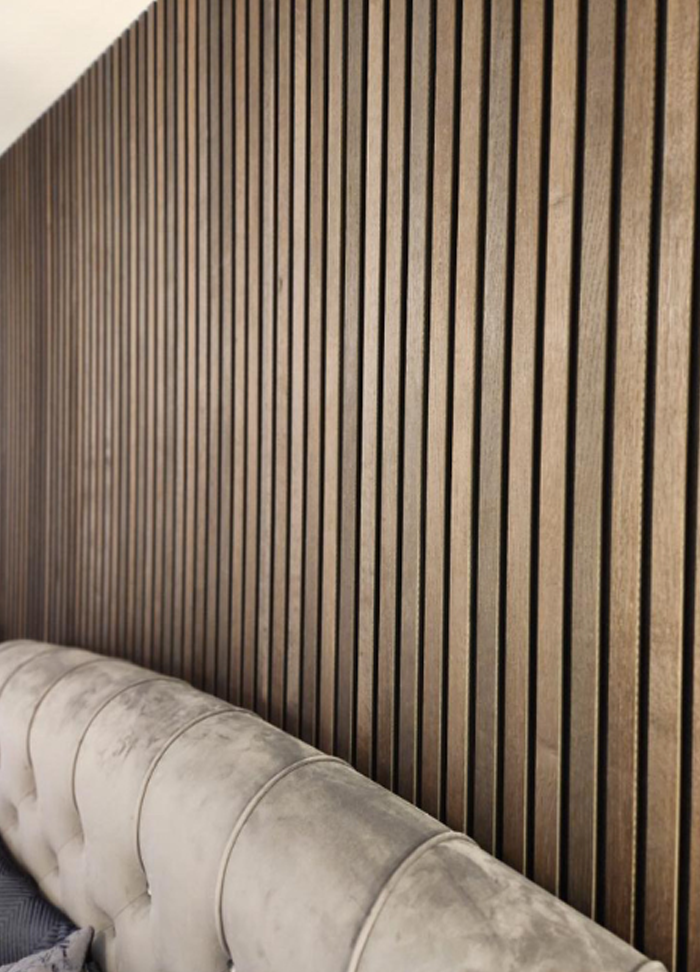
You can create your own feature wall or alter the feeling of space in your small bedroom using our Slatted Wall Panels.
Master Bedroom Panelling
There are so many ways to elevate your bedroom design with wall panelling. Be bold, and create a statement in your master bedroom.
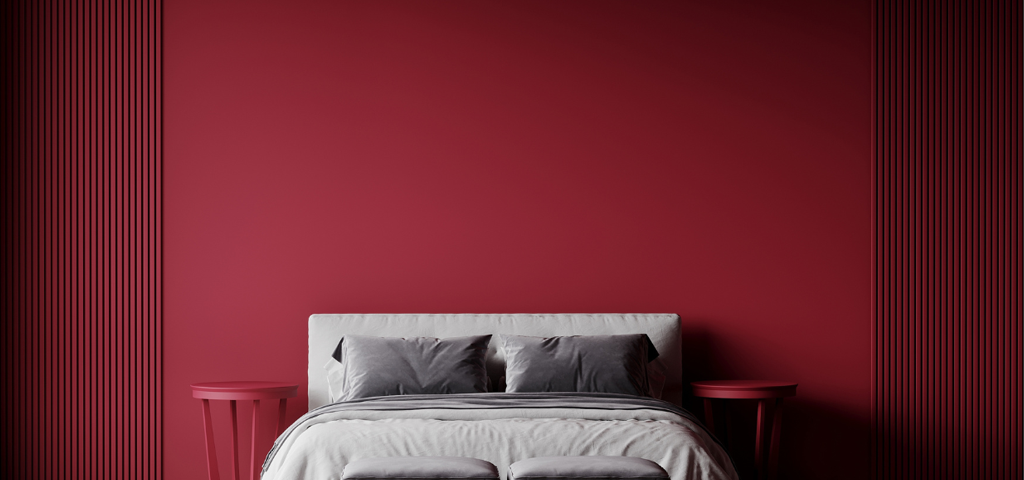
You can go big with more luxurious wall panelling in a larger bedroom. Creating a feature wall using a striking colour scheme that contrasts the rest of the room can liven up the space and catch the eye.
This is often done using wall panelling behind the bed as a focal point or headboard. Headboards are a simple way of subtly inserting your decorative style into your bedroom, whether that be modern or in a more shabby-chic style.
Going with a more traditional moulded or bevelled panel design can work wonders in a period property for a classical and established look that ties in with the remainder of the home. This can also be a trick for adding interesting details to newer and more contemporary style walls.
Panelling with Shelves
Wall panelling can also be a tool for sneaking in storage to your bedroom. As opposed to panelling a full wall, the bottom section can be panelled to the height of your choice and protrude slightly from the wall to create built-in shelving.
The shelving wall panels could be used to display decorative items such as artworks, house plants, books and other knick-knacks, or making use of the functionality of the wall by adding trailing plants.
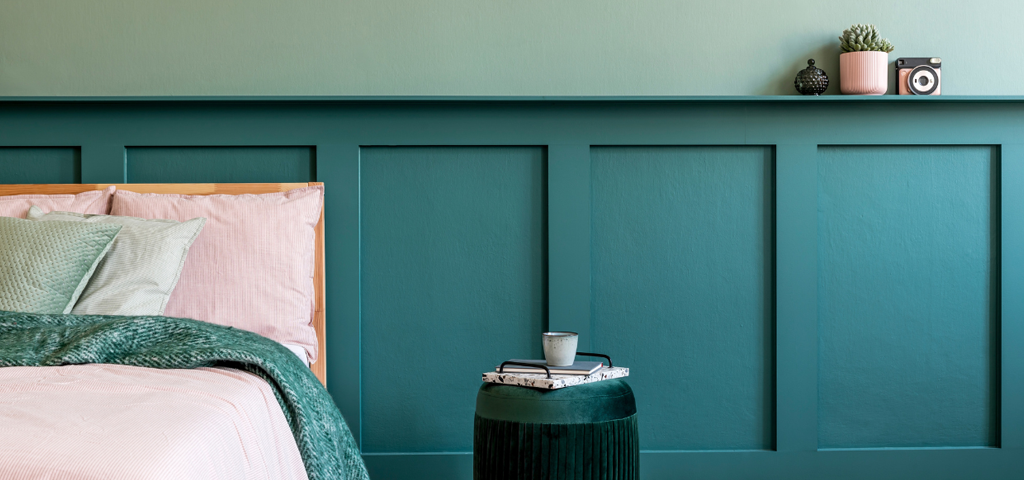
This extra storage can minimise clutter in a bedroom space, with this additional surface allowing for a neater and organised room that opens up floor space for bedroom furniture and other larger decorative items.
Half Panelling
Following on from the use of panelled walls as shelving, half wall panelling is a great way to create visual balance using just the bottom half of the wall.
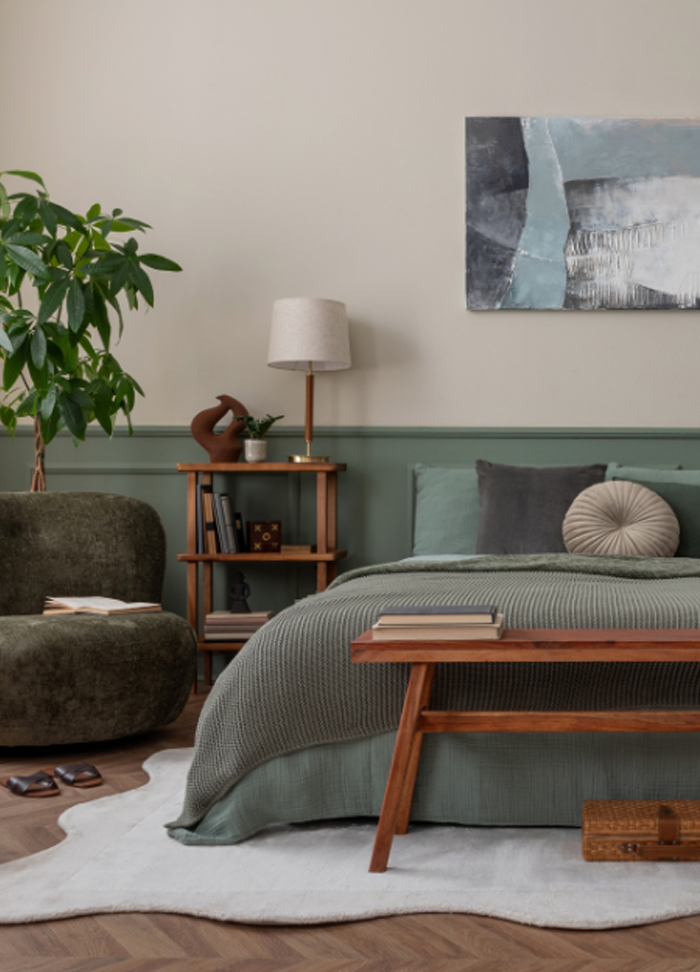
Historically, half panels were used in order to protect walls in hallways and other high-traffic areas of the house from damage or denting. Now they can be used with this in mind, but also as a stylistic choice to help tie pieces of interior design to the rest of the home. For instance; a painting could be hung up above the half wall panelling to create sectors on the walls.
Another functional use for the half wall panels is to conceal electrics and plumbing. This way, unsightly cables and pipes aren't left clogging up areas, creating a sleek and modern look to your bedroom. As well as producing something visually exciting, this method is ideal if you're looking for a cost-effective way to remodel your bedroom as it uses half the materials of a full wall panelling design.
Cladco 600mm x 600mm Acoustic Internal Slated Wall Panels are the perfect size for half wall panelling, lightweight and easy to install if you're looking for your next DIY project.
Headboard Panelling
Headboard panels are a unique take on the traditional headboard, being attached to the wall rather than being an element of the bed.
To give the illusion of a headboard, a section of the wall behind the bed is panelled. This option as opposed to a pre-designed or pre-fixed headboard, allows you to manipulate the panels to the size and layout of your choosing.
One of the practical benefits of this, along with the general protection of the wall, is that it can dampen outside sound with the use of acoustic panels and create a more comfortable sleeping experience. As is true if you panelled the entire wall, this smaller-scale change can add character and emphasise the focal point of the wall and bed area.
Adding a pop of colour to your bedroom is easy by creating a statement headboard. Need ideas? Take some inspiration from one of our customer's statement headboards that incorporates a natural wood feel to their bedroom using Cladco Slatted Wall Panels in Antique Oak colour.
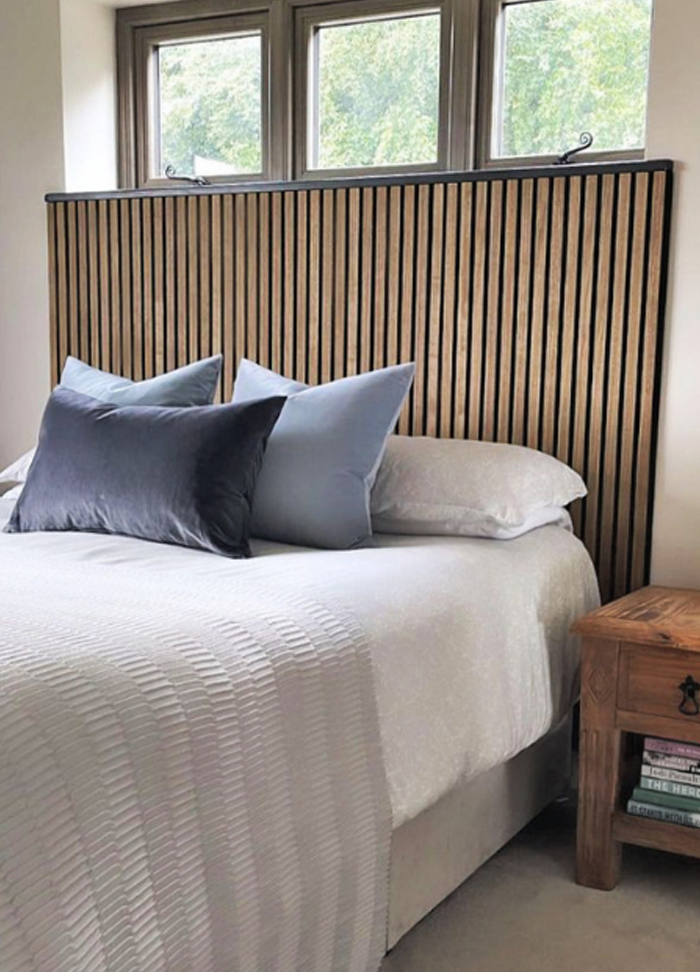
Feeling Inspired? Browse Our Wall Panels
Colour and Material Choices
Colour is important with any interior design endeavour and anything you add to your home needs to fit in with the existing motif.
Colours can be muted for a sophisticated and simple look that allows for the adage of colour in other ways within the bedroom's design. Pastel colours can be an option if you want something more unique without straying too far from neutral shades.
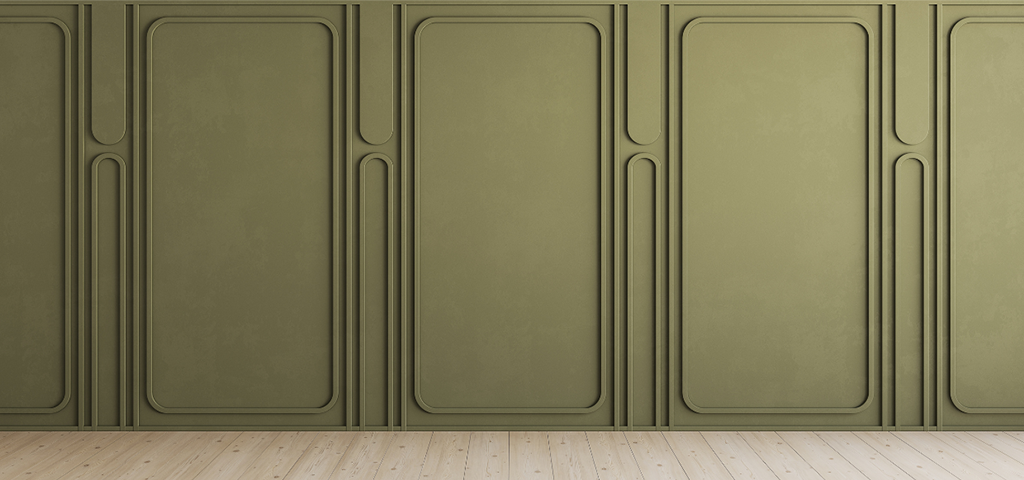
If you wish to be experimental, colour blocking with brighter paint or wallpaper can add pops of colour to your bedroom walls. Feel brave? A dark shade can add depth and drama to the walls and can compliment dark wood grains. Contrast is something to consider when using stronger colours, especially in bedrooms. It can be used to centre the focus of the room which helps to give it structure as well as adding depth.
Selecting materials is your chance to explore different textures for your bedroom wall panelling to go with your soft furnishings. Panelled walls can be made up of a range of materials to give a varying degree of styles and emphasis, including; wood, tiles, ceramic, vinyl, wallpaper and paint.
Wood panelling is a popular and versatile way of bringing a natural feel to a room. The slats can be styled to fit either a modern or more rustic looking home. Paint and wallpaper are also a worthwhile option for a DIY-er on a budget as you can imitate panels and spruce up a bedroom wall with a quick lick of paint or paper.
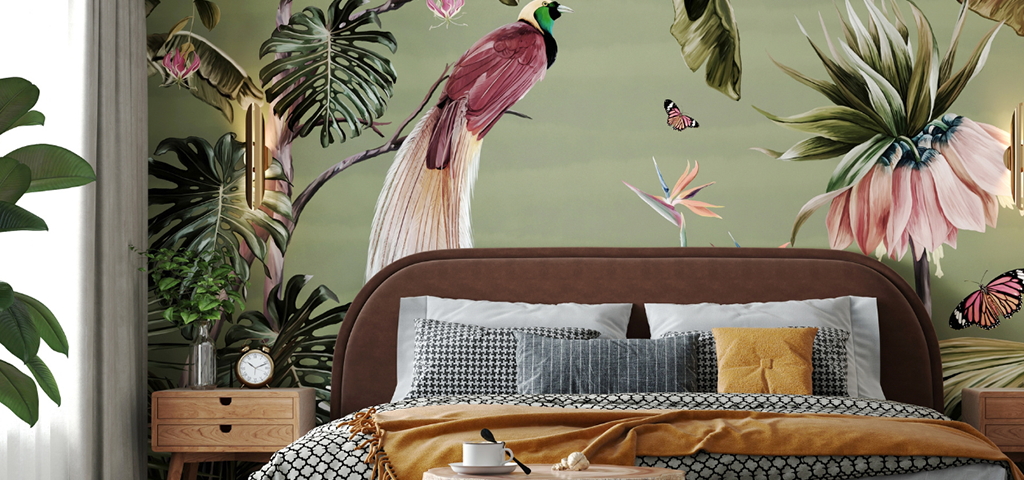
Choice of colour and materials can be an excellent way of incorporating your own ideas into your bedroom decorating.
Sustainability and Eco-Friendly Materials
There are many ways in which more natural and sustainable materials can be used when you're thinking of adding panelled walls to your bedroom.

Having more eco-friendly options for wood panelling and bedroom wall panelling will help with the reduction of deforestation and waste. Making items that have a recyclable lifecycle and take less energy to be produced makes for a more sustainable product.
The benefit of natural materials for the customer are improved air quality due to less toxins in the panelling. Less chemicals being used in the production of natural items can make for a safer indoor environment.
Examples of more eco wall panel material options are bamboo pulp, recycled plastic, recycled wood and organic or natural textiles. Reclaimed wood is a favoured choice as it gives an authentic and rustic look with a mixture of tones due to natural weathering. Check out our Cladco Internal Slatted Wall Panels that are made from wood-veneered high-quality MDF fixed onto a recycled PET felt base.
Historical and Cultural Influences
Wall panelling has been a technique used for centuries. The first recorded use dates back to Ancient Egypt where they used stone, marble and wood panels for functional purposes as well as to decorate. Predominately the panelled walls would provide a canvas for paintings and depictions of religious and cultural beliefs, narratives that we know of today as hieroglyphics.


Fast forward to the Tudor and Elizabethan Medieval era, where panelled walls were seen as a representation of indulgence and top craftsmanship. The panels often featured woodwork detailing and intricate patterns. These sorts of designs can still be seen today, decorating the halls and rooms of grand country homes.
In Georgian times there was a move towards symmetry and a more classical style, where flat or raised panels were placed with an emphasis on proportion and balance in design.
During the Victorian era, the focus was on more ornate and standout pieces. Similar to the motifs seen from the Tudors, they were lavishly decorated with patterns and often imagery of leaves, with Gothic and Renaissance influence.
A shift towards more contemporary ideas during the Art Deco Movement favoured geometric and linear decoration. Panelling designs were streamlined and rich to add drama.
Today we can see elements of these trends in different variations of wall panelling, ranging from traditional to modern. In the form of minimalist neutral compositions, Scandinavian interior design is an influential giant.
Their stripped back approach combines functionality with simple beauties can be applied to bedroom wall panelling with light colour schemes and a subtle use of texture to open up spaces. A sure-fire way to elevate your bedroom wall setup.
FAQs
This can depend on the methods, colours or materials used when panelling the walls. If you're working with a small bedroom wall, you can go from the floor to the ceiling with thin slats to help elongate the wall so it appears bigger.
This may make the room seem crowded if the bedroom already feels cramped. Instead try a single feature wall that runs from floor to ceiling to make a statement or act as wallpaper in your bedroom.
Conclusion
In conclusion, there are many ways that bedroom wall panelling can be utilised to make the most of your space. Whether they're used to add colour, make a room feel bigger, add drama, add texture, incorporate natural wood into your bedroom or even act as a home for your house plants. A big factor in the choice of colours will be based on your pre-existing style preferences and whether you want to add warmth or coolness to your room.
Allow your ideas to flow, and let the painting and decorating begin.
